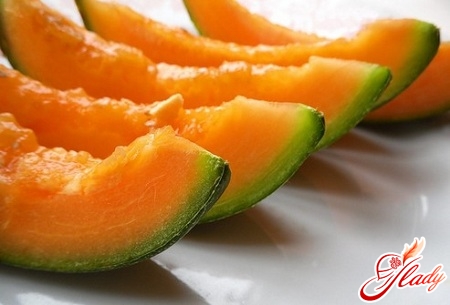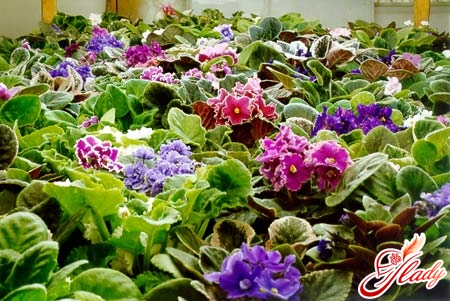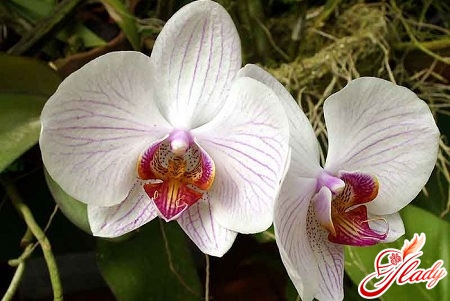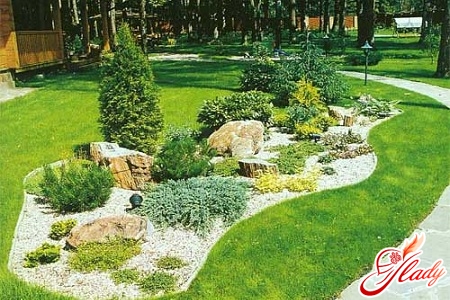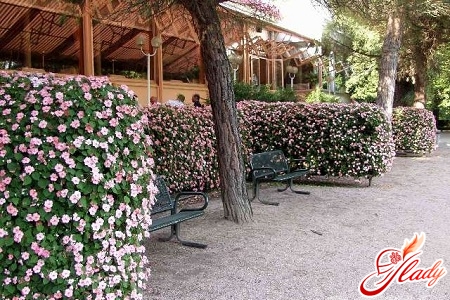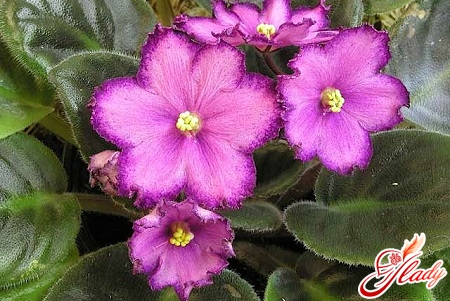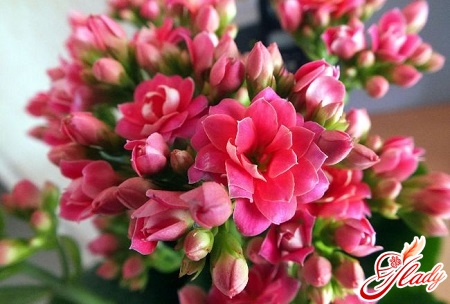 If you want to add to your collectionindoor flowers beautiful, but unpretentious specimen, then you should pay attention to the flowering varieties of Kalanchoe. Not many people know that this medicinal plant is also represented by very decorative varieties - a kind of bouquets in a pot. Among them, Kalanchoe Kalandiva, which was bred from the Kalanchoe Blossfeld variety, is very popular. In many ways, these varieties are similar, but they also have some differences. Kalandiva differs from its progenitor, first of all, in its miniature size. However, it is worth learning more about the features of this variety.
If you want to add to your collectionindoor flowers beautiful, but unpretentious specimen, then you should pay attention to the flowering varieties of Kalanchoe. Not many people know that this medicinal plant is also represented by very decorative varieties - a kind of bouquets in a pot. Among them, Kalanchoe Kalandiva, which was bred from the Kalanchoe Blossfeld variety, is very popular. In many ways, these varieties are similar, but they also have some differences. Kalandiva differs from its progenitor, first of all, in its miniature size. However, it is worth learning more about the features of this variety.
Botanical portrait
Kalandiva belongs to the Crassulaceae familygroups of succulents. This largely determines the conditions for keeping Kalanchoe at home and its care requirements. This variety does not grow in the wild, as it is the result of selection. But its relatives live on almost all continents - in Africa, Australia, Southeast Asia and America. The Kalandiva variety is notable for its unpretentiousness and special decorativeness. Unlike Kalanchoe Blossfeld, this variety blooms longer and more abundantly. This plant looks like a compact bush with thick stems and neat fleshy leaves, which can be both smooth and velvety. The size of the bush does not exceed thirty centimeters in height. Peduncles are short, flowers are small, double, collected in lush inflorescences. The color of the flowers is represented by a wide warm palette: all shades of red, pink, yellow and salmon. Kalanchoe Kalandiva mix looks especially impressive - a mixture of plants with flowers of different colors. Flowering Kalanchoe are short-day plants and bloom only if a strict light regime is observed. But they bloom very abundantly and for a long time - up to six months. Flowering usually begins in January and continues until summer. After flowering, a period of rest begins, which is not pronounced in these plants. Therefore, the plant does not require special care during this period.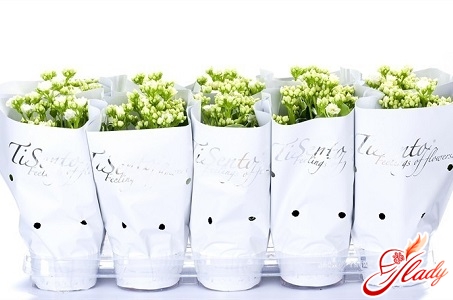
Conditions of maintenance and care
Kalanchoe is considered an unpretentious plant,ideal for growing indoors. Kalanchoe causes virtually no trouble to its owners. The only difficulty is maintaining the light regime for bud formation. This variety of Kalanchoe prefers well-lit rooms, but easily tolerates partial shade. It is not recommended to place pots with Kalanchoe in shaded areas, as well as on brightly lit windowsills. In any case, it is necessary to shade the plant from direct sunlight, which can cause leaf burns. Kalandiva tolerates dry air well and does not need additional spraying. Room temperatures in the range from 15 to 30 degrees are also quite comfortable for this plant. The only thing this flower is afraid of is cold drafts, which can cause gray mold to appear on the leaves. A combination of high humidity and high temperature is also considered unfavorable for the plant. In such conditions, Kalanchoe is affected by powdery mildew. Therefore, the main care of the plant comes down to timely, but not very frequent watering and fertilizing the flower. Water the Kalanchoe with soft (settled or filtered) water as the earthen lump dries. Remember that all succulents tolerate a lack of moisture easier than its excess. Therefore, after watering, it is necessary to wipe the bottom of the pot and tray dry. Fertilize Kalanchoe in summer and autumn - during the period of laying flower buds. For fertilizing, use complex fertilizers or mixtures intended for succulents. Fertilizers are diluted in accordance with the instructions and added to the water for irrigation. Feed the plant about once or twice a month. During the flowering period, the plant does not require special care. However, to extend this period, experienced gardeners recommend removing all wilted flowers. And it is also very important to ensure that water does not get on the Kalanchoe flowers during spraying. Small flower pots and soil mixture intended for succulents are suitable for growing Kalandiva. The plant does not require frequent replanting, as it does not grow large. Therefore, the flower should be replanted only after purchase, replacing the temporary pot with a permanent one. It is also recommended to replant in case of root rot and pest damage. Kalanchoe is propagated by cuttings, rooting individual leaves or cut shoots. Kalandiva can be propagated by leaf cuttings at any time. But stem cuttings are conveniently taken during pruning, which is carried out after the flowering period is over. The flower is pruned exclusively for decorative purposes, to remove all flower stalks and give the bush a more compact shape. Sometimes pruning is carried out "on the stump". This procedure allows you to rejuvenate the plant and give it the opportunity to gain strength for flowering in the new season.
Bloom
Often, new owners of kalandiva do notcan wait for the plant to bloom again, and therefore simply throw away the bush that has lost its decorative effect. And this happens only due to a lack of information. After all, they buy the plant as unpretentious, in full confidence that Kalandiva does not require special care. All this is true, but only partly. For Kalanchoe to bloom, a short daylight period is necessary, the same as in its homeland. And indoors, the plant is often kept in a long daylight period - after all, our lamps burn until night. In order for the plant to bloom again, it needs lighting no longer than ten hours a day. How to care for Kalandiva during this period? After nine o'clock in the evening, it is necessary to close the window where the flower is located with thick curtains. If a bright lantern shines outside the window or the lights are left on in the room for a long time, then the flower pot can be put away in the closet until the morning. You can also cover the plant with a plastic bucket, fortunately, the compact size of the bush allows you to do this without difficulty. Such measures are necessary only until the first flower stalks appear. After that, the plant can be kept in the usual light mode. It is clear that all these efforts significantly complicate the care of the flower. But if you want your calandiva to bloom for a long time and continuously, then you can bother. After all, there are no other features that complicate the care of this succulent. By the way, another reason for the lack of flowering on time can be an excess of fertilizers. So do not get carried away with additional feeding.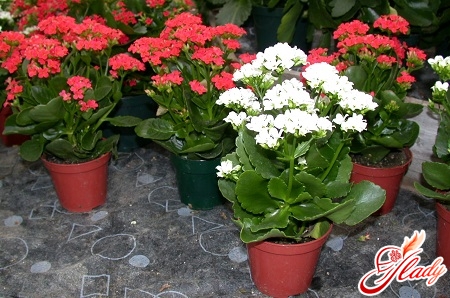
Summary
Let's summarize everything that has been said above.Don't be alarmed by the listed features of the plant and possible difficulties in care. In fact, calandiva is a very unpretentious plant. It is rarely affected by pests, and if you properly care for it, it will not get sick. You just need to keep the plant in a well-lit room, do not overwater it and feed it on time. This will be enough for the flower to feel quite comfortable. If you want to see it blooming every new season, and for the flowering to be abundant and long-lasting, then:
- in cloudy weather, provide the plant with additional lighting - then the flowers on it will be large;
- remove the flower pot in a dark place after it has been in the light for nine hours;
- after flowering, prune and give the Kalandiva a rest, reducing watering and completely stopping feeding;
- with the onset of autumn, begin to feed Kalanchoe fertilizers for cacti and succulents, and before flowering - fertilizers for flowering plants.
By following these simple rules, you will receivea healthy, green and compact bush, which in due time will turn into a real bouquet on the windowsill. Remember - what goes around comes around. So do not skimp on caring for your Kalanchoe Kalandiva! Indoor flowers are responsive and grateful. Good luck!




